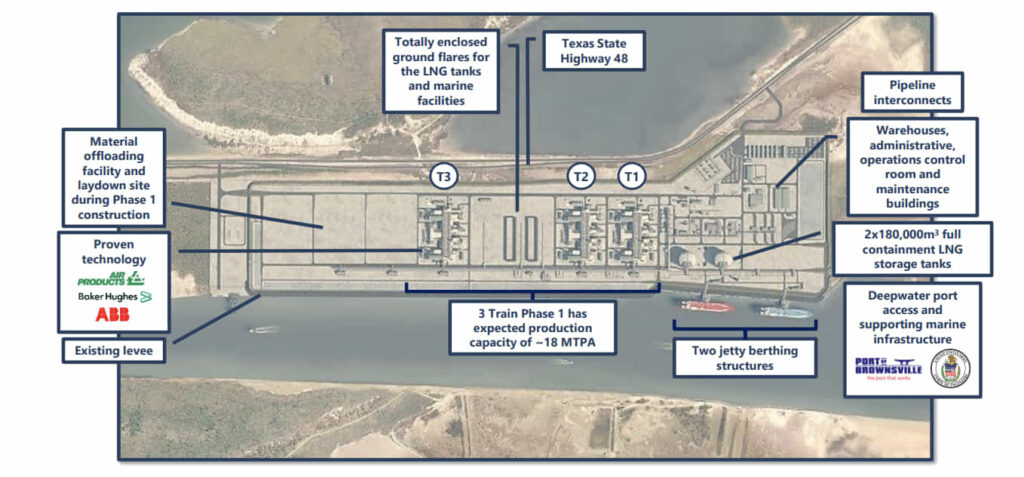NextDecade Corporation Considers LNG Terminal Expansion Amid Global Demand Surge
Given the worldwide spike in total demand for natural gas, Houston-headquartered energy player NextDecade Corporation is contemplating further capacity expansion of its liquefied natural gas (LNG) export terminal at the Port of Brownsville, Texas. This expansion quest is in line with the firm’s expectations of further growth in LNG demand over the coming years, driven by the slowdown in clean energy spending because of global price volatility and political upheavals in certain regions.
With the growing global demand for natural gas expected to continue rising, the U.S. player underlines that gas is also anticipated to have a meaningful role in long-term global energy markets as a secure, reliable, and affordable fuel source, as well as to support renewables growth. Annual global gas demand saw a 700 billion cubic meters (bcm) surge over the past decade at a 1.8% compound annual growth rate (CAGR) and the global gas demand increased around 2.5% in 2024 despite limited new LNG supplies.
While noting that substantial additional investments in LNG infrastructure and significant incremental LNG are needed to facilitate gas demand growth up to 2040, NextDecade uses Wood Mackenzie’s LNG supply data to point out that LNG is poised to become an increasing portion of the global natural gas supply because of constraints in indigenous gas production and transportation. The global gas demand is forecast to outpace LNG supply growth.
Taking into account Wood Mackenzie LNG supply data as of February 15, 2025, and its 2025-2040 forecast for global gas demand, NextDecade highlights that the existing regas capacity can accommodate substantial LNG supply growth, with operational regas capacity expected to accommodate more than 1,300 mtpa of LNG by 2030, supporting significant additional LNG supply capacity.
How does Rio Grande LNG fit into this?
NextDecade is convinced that U.S. LNG, including incremental LNG from expansion trains at the Rio Grande LNG facility, is “an attractive and economic option” for global energy users. The firm seeks to deliver “secure, economically attractive, and sustainable energy solutions through the safe and efficient development and operation” of liquefaction and carbon capture and storage (CCS) infrastructure.
The company claims to be committed to supporting the Rio Grande Valley community by creating thousands of jobs, investing millions into the local supply chain, supporting education systems, and regularly engaging with residents and local stakeholders.
“NEXT Carbon Solutions is in the early stages of developing a potential CCS project at the Rio Grande LNG facility, focused on post-combustion carbon capture,” outlined NextDecade while disclosing that it is advancing commercial discussions with multiple potential LNG counterparties for long-term offtake from trains 4 and 5, as LNG trains 1 and 2 are 38.1% complete and Train 3 is 15.3% finished.


